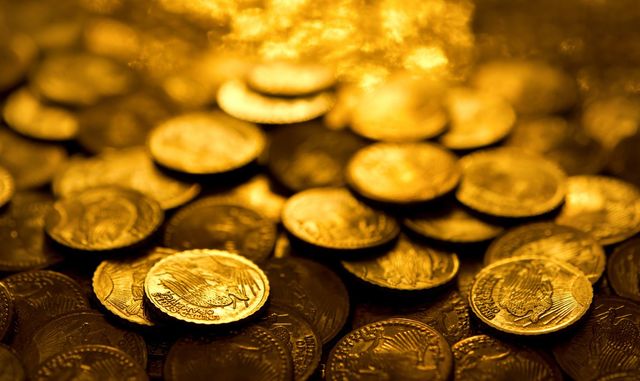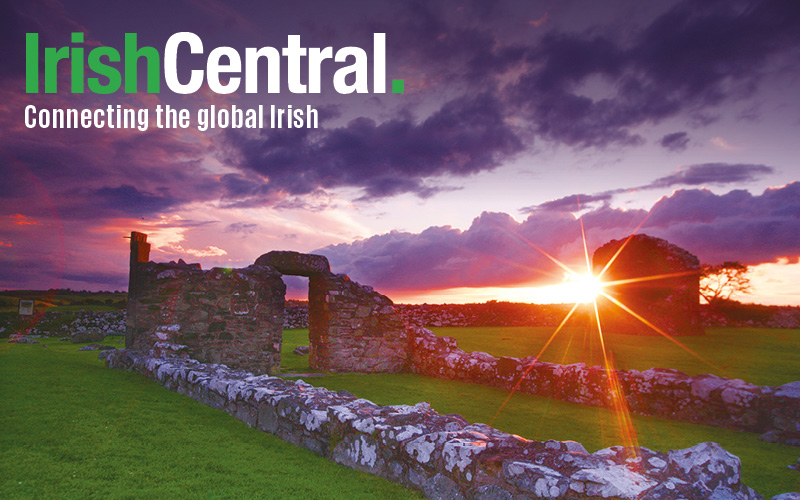From the incredible early Bronze Age gold hoard discovered in a ditch by a Donegal farmer to the medieval coins found on a wedding ring hunt.
For many years England has been a place where ancient gold relics were quite often found.
However, things are completely different in Ireland: this kind of findings usually become a nation-wide sensation. Paradoxically, ancient gold relics are very rare findings here.
This is what happened at the end of June 2018, when a farmer Norman Witherow, was digging a drainage ditch in county Donegal.
The man found some strange objects made from yellow metal, they looked like large rings. He just put these into his car and continued his work.
How could he know that these were extraordinary relics if they were completely covered with dirt. However, just to be on the safe side, Witherow showed these strange rings to the jeweler he knew and the latter strongly recommended him to report about this finding to competent authorities. In this case, it was county Donegal museum.
NORMAN WITHEROW
These pieces of metal had literally dropped a bombshell in the historical museum. So, the historians promptly reported to the mass media, that ancient golden relics had been found in Ireland.
Maeve Sikora, a custodian in the Irish Relics Department of National Museum of Ireland came from Dublin to Donegal to see such a finding. She participated in studying the area where the relics were found and took them to Dublin for a thorough examination.
The conclusion of National Museum specialists was that the golden rings were made during the Bronze Age or even earlier.
These four rings were almost identical in terms of their size and shape and they were made from pure weighty gold. The rings are quite large in diameter, so they could be worn on a hand, however, they weren’t used as bracelets. Possibly, they served as some kind of monetary unit, an equivalent of coins.
Maeve Sikora acknowledged that these large ‘bracelets’ were used neither as bracelets nor as any other kind of accessories. The fact that they were ring-shaped can be possibly explained by practical purposes – this shape was more convenient to store and carry them around.
A stash of medieval coins
This story happened at the end of 2019. A man from Northern Ireland whose name was Paul Raynard worked in the field near Ballycastle, County Antrim and lost his wedding ring there.
Since he definitely didn’t want to leave the ring there, but the chances were very low that he’d find his ring without using some special devices, Paul decided to ask his friend who had a metal detector to help him.

At first, they didn’t succeed much. But then, the metal detector started beeping again and when trying to shovel the ground the friends found a stash of gold and silver medieval coins.
All in all, there were 84 coins in the stash. Some of the coins were very rare and very valuable. For example, now the commercial value of rare king Henry VIII coin is about 5,000 pounds sterling.
Roughly estimated total value of the whole stash is about $128,552!
48 tons of silver found off the Irish coast
Almost 48 tons of silver were found on a sunken British cargo ship in 1941, 300 sea miles away from city Galway in Ireland.
In February 1941 the ship SS Gairsoppa carrying a cargo of silver was torpedoed by a German submarine.
Richard Ayre, the second officer on the ship, was the only one who survived.
In 2010 the UK Department for Transport made a contract with the American company Odyssey Marine Exploration specializing in picking shipwrecks from the sea bottom to recover the silver from the sunken ship.
In September 2011 it was reported that Odyssey Marine Exploration has detected SS Gairsoppa shipwreck. Odyssey Marine Exploration used special underwater robots to get the silver from the bottom.
First, they took about 1203 silver bullion bars to the surface. However, Odyssey Marine Exploration specialists believe that these are just 20% of precious metal cargo carried by SS Gairsoppa and continued their work.
A unique gold accessory found in Fermanagh bog
In 2009 Ronnie Johnston had his treasure-hunting trip with a metal detector in his field in Corrard, near Belle Isle estate.
In one of the holes, he found a strange object. It seemed interesting, but it didn’t look like something extraordinary. Ronnie thought it was a spring that was a part of some vintage vehicle and he put his funding on a shelf.
In May 2011, he was quite surprised to see a very similar object in a treasure hunters magazine. The thing which he though was some vintage spring turned out to be an ancient gold accessory – called a torc. It dates back to 1300-1100 BC and it would probably have been worn around the waist.
The name "torc" comes from a Latin word meaning "to twist". It is usually made from a bar of gold which is twisted to form a spiral pattern.
This finding has taken its place of honor in a museum, while Ronnie Johnston received his reward.
The Ardagh Chalice
The Ardagh Chalice was found in 1868 by two teenage boys not far from Ardagh village (County Limerick).
Inside the Chalice, there were four brooches, a wooden cross and a bit smaller bronze chalice used for some spiritual services. Nowadays, all these objects are on show in the National Museum of Ireland.
One popular theory suggests that the chalice was used during the Mass and together with other objects it was interred hastily because of the enemy troops attack to make sure that these relics won’t fall into the enemy's hands. This theory is supported by the fact that all the objects were hidden without applying any proper protection measures.
My #FavMusObject can only be the gorgeous Broighter Boat found at @NMIreland. Truly is a must-see for all! pic.twitter.com/IJPpsZw3AA
— Declan Walsh (@DeclanWal) May 25, 2016
Silver Chalice is decorated with gold, bronze, enamel and brass fittings, glass, amber, green malachite, and rock crystal, etc.
The main features of the Chalice is a subtle filigree ornament of gold working, decorative handles; it is encrusted with semiprecious stones, gems, and enamel.
The Ardagh Chalice consists of more than 350 separate pieces and three main parts – the Chalice itself, its base and stem; all the part are pinned together by means of a copper bolt.
Archaeologists-experts didn’t agree on the precise date when this masterpiece was created: it may come from the 8th or 9th centuries.
The Chalice is decorated with zoomorphic images, geometric ornaments; below the gold filigree ornament, you can see the disciples’ names (except Jude) written in the friso. To create this masterpiece the craftsmen had to master a wide range of metalwork approaches as well as melting technologies to obtain scarce metals, lost wax casting, riveting, gold filigree solder, working with molten glass and cloisonne enamel.
Conclusions
As you may see, there are many treasures and relics hidden in the land of Ireland. Some of them have already been found, but this is just a small part. Maybe you also want to get on a roll? Can it be that this is you, who will find a hoard that later we’ll see in one of Irish museums and the finding will make you rich as well?
You see, there is nothing unreal about this – one of the hoards was found in autumn 2019.
However, please keep in mind, that you must have a written permission from the Minister for Arts, Heritage and the Gaeltacht. Without such permission, you may have some legal troubles.
And, of course, you will need a metal detector. Selecting one is a rather challenging task if you aren’t an experienced treasure hunter, but you can read a guide on metal detectors. I’d advise not to aim at getting the most expensive metal detector since you can find a treasure even using a cheap one, because it seems to me, that this is all about your personal luck.
But, even if you don’t find the greatest treasure of all, yet you will definitely have some valuable and fascinating findings. Can you imagine how it feels when you find a coin or a relic that is over 100 years old! To sum up, I’d say that treasure hunting is a very interesting, dynamic and absorbing hobby.
This article was submitted to the IrishCentral contributors network by a member of the global Irish community. To become an IrishCentral contributor click here.





Comments